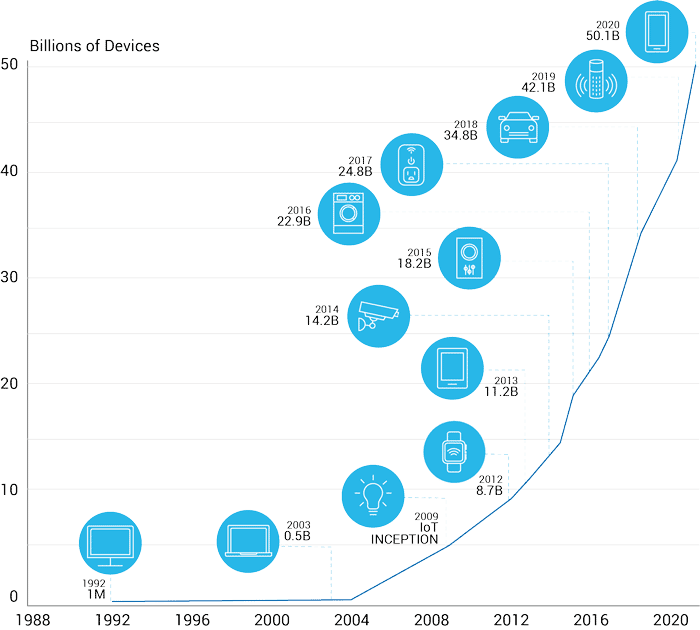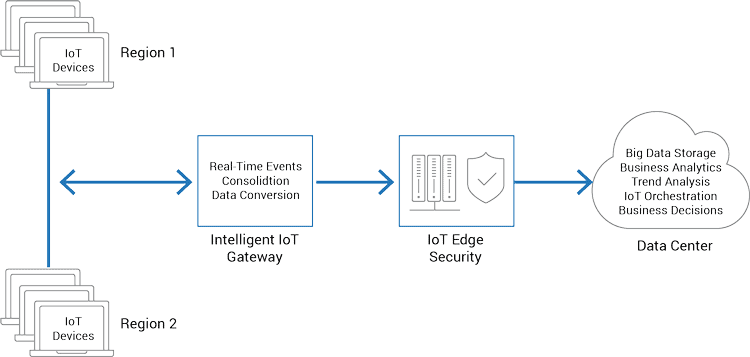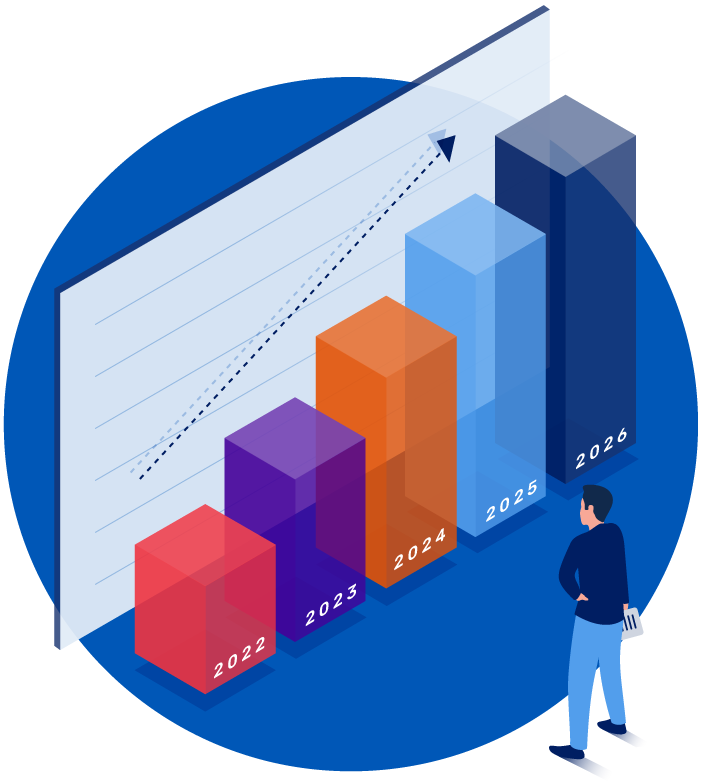What is IoT Telemetry?
This article describes telemetry – the technology of collecting and receiving data from remote sensors or data collection systems. The market is exploding with new telemetry systems in the form Internet of Things (IoT) devices and billions of devices are being deployed worldwide.
Related articles:
- What is 5G?
- 5G Network Reliability Explained
- 5G Energy Efficiency Explained
- 5G Key Technologies Explained
Background
The term telemetry is used for technologies that measure and collect data from remote locations and transmit this data to receiving systems for monitoring and analysis. Traditional examples of telemetry are:
- Monitoring data from space crafts
- Animal tracking devices
- Automobile sensors for fuel level, engine heat, vehicle speed and more
- Heart monitors (EKG)
- Convicted felon ankle bracelets
- Wearables such as Fitbit health monitoring devices
Telemetry provides the ability to access data from remote locations. Very often, these locations are difficult or expensive to get to and have limited access to power and physical networks.
Internet of Things
The rise of IoT is bringing about a market revolution. One of the biggest use cases for IoT is connected devices and remote management and monitoring – or telemetry. Some of the technologies converging to drive IoT market growth include:
- Battery technologies that can power IoT and network communications for 10 or more years of the device’s life without recharging
- Miniaturization of hardware and embedded systems capable of complex applications
- Artificial intelligence and machine learning data analysis
- Machine to Machine (M2M) capabilities that allow IoT devices to communicate with other local devices to perform analytics local to the IoT devices themselves
- Cloud-edge technologies capable of ingesting data from thousands to millions of devices and consolidating and analyzing it in near real-time before sending ot to the cloud
- Wireless technologies including Wi-Fi, 5G cellular, Bluetooth, Li-Fi and emerging LAN and WAN that support large numbers of devices with low-power requirements
Market Size
The IoT market is expected to be between $2.5 to $3.7 trillion worldwide.

The number of IoT devices deployed will be over 50 billion in the next couple years of the publication of this article (2019). And the use of telemetry technologies has grown exponentially from 1850 to today.
IoT Telemetry Protocols
IoT devices communicate using several network protocols. IoT devices used for telemetry such as remote sensors have the following requirements:
- Low Power – Many IoT devices are powered from an embedded battery. New battery technologies have life expectancies of 10 to 20 years.
- Low-Code Footprint – IoT devices are required to be as small as possible. This requires lightweight protocols that do not need heavy computing or wireless transmission power requirements.
- Low Bandwidth – Higher bandwidth transmissions require higher power and additional hardware footprints.
- Local Intelligent IoT Gateways – The closer this system is to the IoT device, the lower the power required to transmit to this receiving system.
IoT telemetry communications between the devices and the receiving system are performed by several protocols. Each protocol has benefits and flaws.
- MQTT – The Message Queuing Telemetry Transport (MQTT) protocol runs over TCP/IP and was designed for embedded hardware devices with limited embedded components and low power requirements. This protocol uses a publish-subscribe approach, which is inactive between transmissions and data retrievals. MQTT requires an intelligent IoT gateway.
- CoAP – Constrained Application Protocol (CoAP) was designed to run on devices constrained by low power and lossy networks. The protocol runs on UDP and is easily translatable to HTTP. CoAP can be routed over IP networks and supports IP multicast for M2M communications between other IoT devices.
- HTTP – This protocol is often combined with the Restful API protocol and is routable across the internet but is insecure.
- HTTPS – This protocol is secure and robust but has high power and processing requirements to encrypt data traffic and requires remote management of certificates.
- Alternative protocols
- XMPP – IM-based protocol, simple addressing scheme
- Advanced Message Queuing Protocol (AMQP) – Server to Server
- Streaming Text-Oriented Messaging Protocol (STOMP)
- Data Distribution Service (DDS) – Device to Device
- OPC UA
- Web Application Messaging Protocol (WAMP)
Network Architectures
An IoT telemetry architecture includes the components shown below.

- IoT Devices – IoT devices are independent network nodes that communicate across IP networks or often directly with IoT gateway systems.
- M2M IoT – Protocols communicate with the local IoT gateway or alternately with central datacenter or cloud locations.
- IoT Gateway – the intelligent IoT gateway performs a set of functions including,
- Protocol translation between M2M IoT protocols and central datacenter and cloud applications
- Consolidation of upstream IoT communications to WAN-optimized data communications
- Near real-time analytics and event management. IoT devices communicate with the gateway with low-latency network connections. Compute and other resource-intensive analytics can be performed locally for time-critical events
- IoT gateways communicate using secure and encrypted protocols.
- IoT Edge Security – IoT devices are exposed and vulnerable (by design) and require security technologies including firewall deep-packet inspection and others. IoT devices that have been compromised should be detected and quarantined as soon as possible. Edge security for IoT devices should be provided both at the IoT gateway and at the ingestion point of the central datacenters or clouds.
- Datacenter – IoT data ingested is often processed by:
- Business applications that monitor and act upon the telemetry data. IoT data from multiple locations are analyzed centrally with a complete view of all deployed devices.
- Storing the incoming data stream in various big-data repositories for long-term storage and analysis
- IoT device management software systems that provide orchestrations, software/firmware updates, health monitoring and overall management. New IoT devices can be deployed and on-boarded with centralized systems.
How A10 Networks Can Help
A10 Networks provides products for high-performing network and security systems that process millions of concurrent sessions in real time. A10 Networks’ customers include the largest network carriers and cloud service providers in the world.
The company’s portfolio of products is broad and covers end-to-end network service provider infrastructures from network-edge computing, distributed packet-core processing and central-office infrastructures to public clouds.
This broad set of products from a single vendor reduces deployment, operations and management costs, therefore reducing TCO.
A10 Networks has unique competitive advantages for 5G infrastructures:
- Portfolio of service provider products
- High-performance VNFs
- In-process service function chaining
- VNF scale-out clustering
- Cloud-optimized architecture
- Industry-standard hardware server optimizations
A10 Networks white paper: Modernize Your 4G/LTE Network NOW for 5G Success
References
CoAP – Constrained Application Protocol – https://en.wikipedia.org/wiki/Constrained_Application_Protocol
MQTT- M2M Internet of Things connectivity protocol – https://mqtt.org/
AWS IoT Core Features – https://aws.amazon.com/iot-core/features/
Internet of Things (IoT) technologies and solutions: PaaS and SaaS – https://learn.microsoft.com/en-us/azure/iot-fundamentals/iot-services-and-technologies
< Back to Glossary of Terms